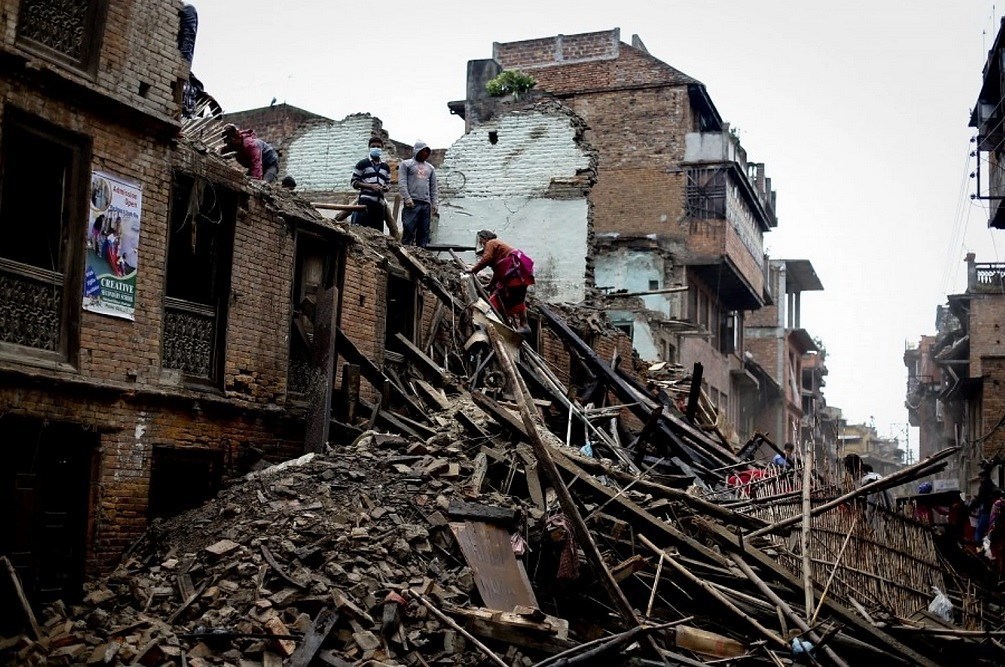Originally published in The Washington Post.

Last Saturday, I watched with the rest of the world as images emerged in the wake of Nepal’s violent earthquake: the dusty faces of survivors, bloodied bodies, the ruined historic buildings. It reminded me of the devastation I witnessed after the earthquake in my homeland, Haiti, five years ago — and it made me worry about what will come next in Nepal.
Soon the people of Nepal, with the help of international donors, will begin the rebuilding process. They will face some of the same challenges that we faced in Haiti — and I hope that they will be able to avoid the grave mistakes made by Haitians and by the well-intentioned donors who came to our aid.
There were two disasters in Haiti: the earthquake, and then the humanitarian crisis that followed. More than $10 billion in foreign aid still hasn’t enabled our country to recover from this disaster. In the hope that Nepal will learn from our experience, here are five lessons for effective and just disaster relief:
1. Listen to local people.
Most aid projects in Haiti promised “community participation,” yet most failed to truly include local people. What happened with housing provides a clear example. Many aid groups insisted on moving earthquake survivors who were living under tarps into “transitional shelters.” They ignored the objections of Haitians, who feared the flimsy plywood structures — prone to leaks and collapse — would become their permanent homes. Aid groups spent more than $500 million on these transitional shelters,” but have built less than 9,000 new long-term houses. Tragically, yesterday’s “temporary” shelters have become today’s permanent slums.
2. Put money in the hands of local people.
Many aid groups sent well-meaning but barely trained volunteers and deployed foreign doctors and nurses to areas where skilled Haitian professionals were readily available. Of every dollar given to the earthquake response in Haiti, less than a penny went to Haitian organizations.
If these funds had supported local people and organizations, the money would have gone much further. I witnessed the remarkable work of community groups that helped house and care for the more than 600,000 people who fled Port-au-Prince to the countryside. The groups trained displaced people to become farmers so they could earn a living and rebuild their lives.
3. Reach the most vulnerable people.
When a disaster strikes, people who were already poor or oppressed — or who live far from the center of relief efforts — tend to suffer disproportionately. In Haiti, many villages on the periphery of Port-au-Prince didn’t receive food or water for weeks after the quake. Oppressed minorities, including the LGBT community, were particularly vulnerable to discrimination and violence in displacement camps and were overlooked by aid groups.
4. Invest in infrastructure now to prevent larger disasters in the future.
Most aid after the earthquake focused on the short term, often ignoring long-term needs, especially infrastructure needed to prevent humanitarian crises in the future. My country is still struggling to contain the largest modern outbreak of cholera in history. The disease is thought to have been introduced by United Nations peacekeeping forces after the 2010 earthquake, but the crisis does not end there. This epidemic has continued largely because relief funds have unfortunately not been used to help Haiti build sufficient sewage systems.
5. Aid must be coordinated, efficient and transparent.
Though coordinating aid seems like the most obvious thing to do, it didn’t happen in Haiti. Many aid groups clamored to support high-profile projects, which resulted in wasteful redundancies in some areas while allowing people in less well-known places to languish. Lack of accountability about foreign aid was the rule, with donors and Haitians receiving little news about how this aid was being spent.
In the coming days, the people of Nepal will need essential supplies like food, clean water and blankets. Later, they’ll need support to rebuild broken infrastructure and prepare for future natural disasters. Given the great need, governments and aid organizations must carefully discern how they provide that assistance. The decisions the international community makes now will reverberate into Nepal’s future — and I hope it won’t look anything like Haiti’s recent past.
Nixon Boumba, born in Haiti, works as an in-country consultant for AJWS.
AJWS’s work in countries and communities changes over time, responding to the evolving needs of partner organizations and the people they serve. To learn where AJWS is supporting activists and social justice movements today, please see Where We Work.

